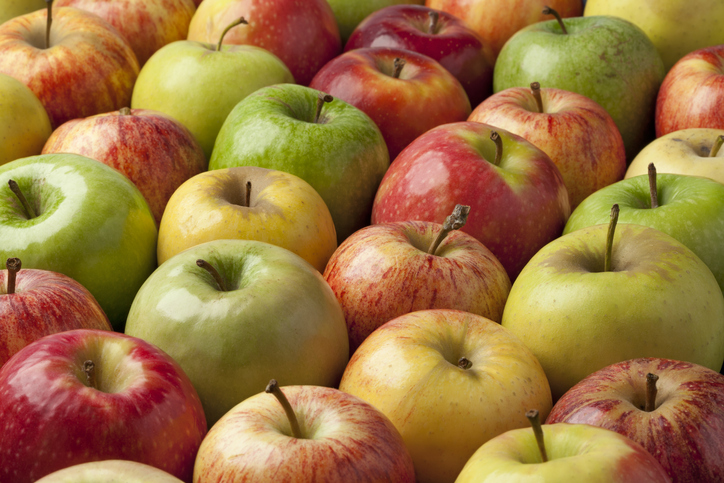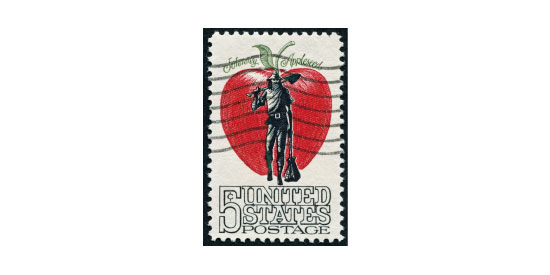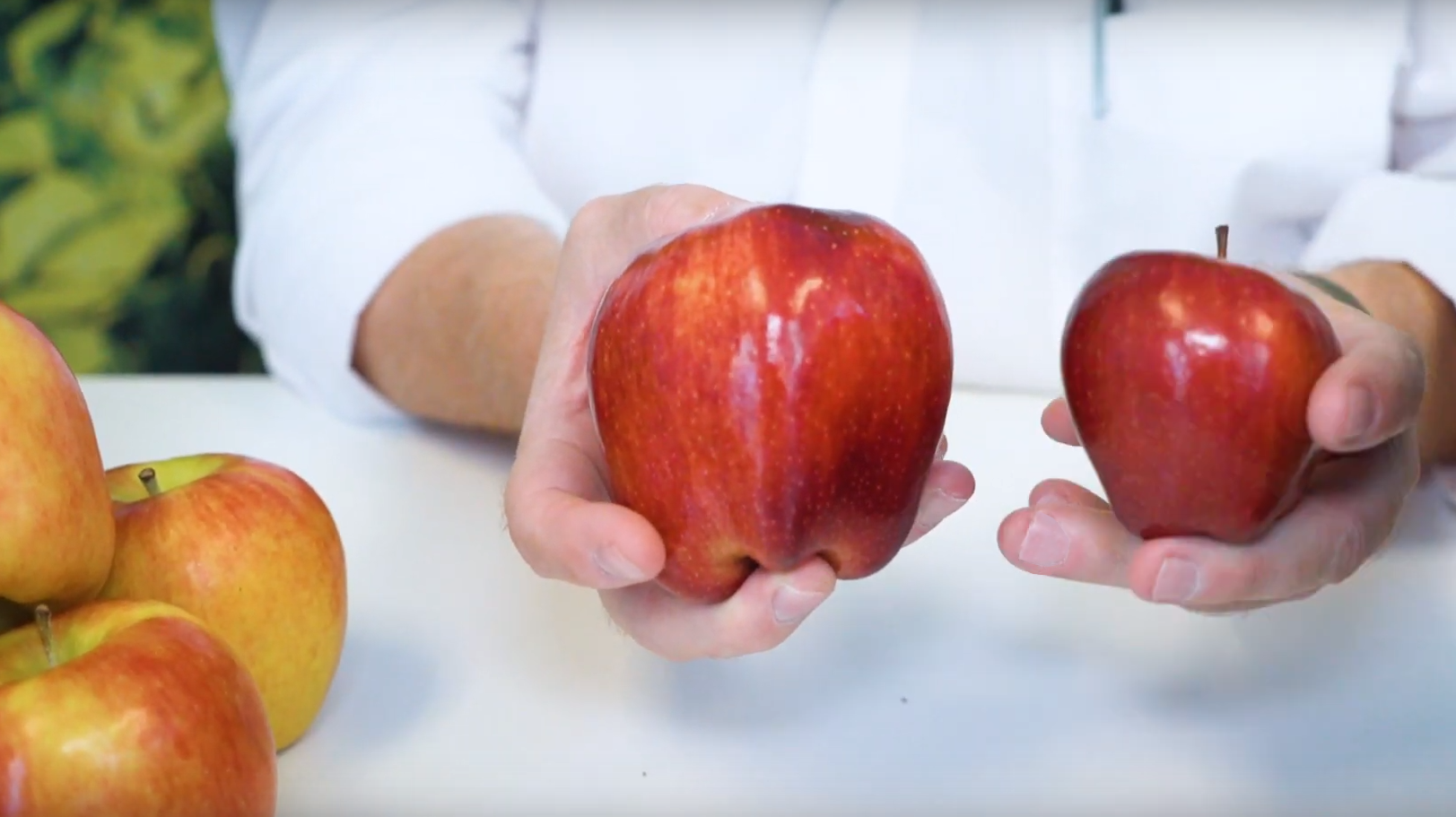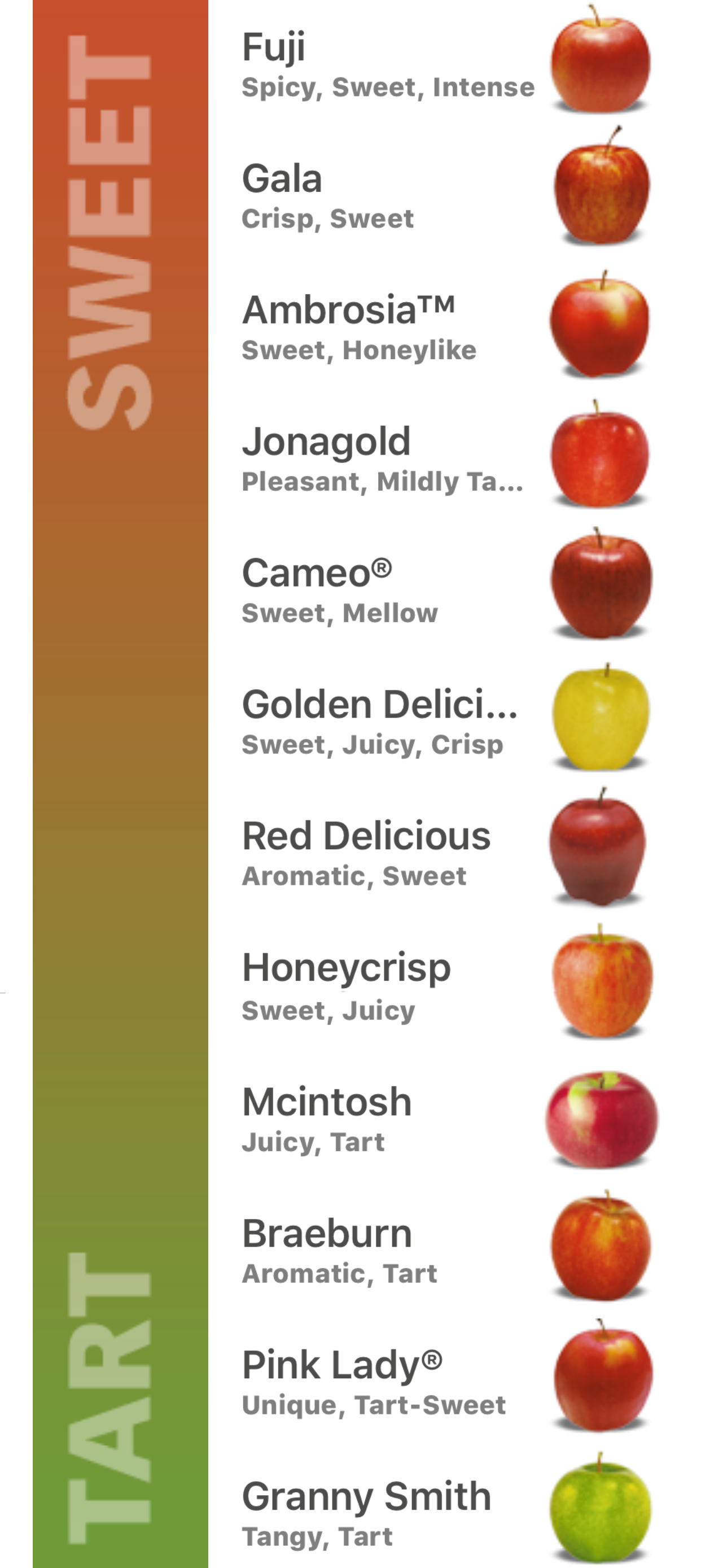
Produce 101: Apples
Sizes, varieties, grades…selecting the best apple for the job is important. Let’s go pick some apples in this edition of Produce 101: Apples.
Produce 101: Apples and a Brief History
Around for thousands of years, apples are one of most ancient fruits still widely grown and consumed today. We all know the story of Johnny Appleseed, who was in fact real, and who planted apple trees for cider-making across the U.S. in the 1800s. Cider apples are different than the common known varieties of sweet apples, as they are too tart to eat, but make excellent cider, which was important at the time.

There are over 2,500 apple varieties being grown in the U.S., with 200 varieties in commercial production. Of those 200 varieties, 15 varieties (!) dominate and account for 90% of all U.S. apples sales. We think Johnny would be impressed!
For 50 years the Red Delicious apple was the most widely grown variety in the United States, but that was taken over in 2018 by the Gala.
Apples are a popular item, ranking second in terms of sales, only lagging behind bananas.
Are You Using the Right Apple for the Right Task?
Apples come in myriad of colors, shapes, grades, and sizes. Some apples are better for baking, some apples are better for eating out of hand. How do you know which apple is the best choice?

Produce 101: Apple Grades
The grading system can be a bit confusing, as both the USDA and Washington State have grading standards, but Washington State is a bit more stringent as it accounts for more demanding internal standards: in other words, the apples themselves must be riper.
Washington Extra Fancy is the top grade available, so if you’re using your apples for hand fruit or if the exterior appearance is important, then you may want to go with these or even U.S. Extra Fancy. If you’re looking to process the apples, peel, slice, or dice, you may want to consider looking at Washington or U.S. Fancy, or even U.S. #1 to save a little money.
The apples will taste great, regardless of the grade, proving the old adage that what’s on the inside matters the most!
Produce 101: Apple Sizes
The next thing we want to look at is the sizing of the apple. Apples are sized based on the number of apples per box. So, the smaller number on the box means a bigger apple. Sizes range from a huge 48 count all the way down to a tiny 216 count, and the differences can often be substantial.
Pictured here are both Red Delicious apples. The one on your left is an 88 count Red Delicious, which means, about 88 apples per 40-pound bushel case.
The one on your right is also a Red Delicious, but in a 175 count. This will be a lot cheaper per apple because it doesn’t have the premium size.

So, if you’re looking for a kid’s snack, or something for a box lunch, the 175 count may be the best choice. If you want a center of the plate amenity basket-type fruit, the 88 count or even larger might be a better fit.
Produce 101: Apple Storage and Handling
When storing and handling apples, avoid dropping the case as they’re very susceptible to bruising. Now while they’re still edible, the bruising limits their shelf life and the bruises can also taste a little bitter.
Keep apples dry, wash them right before you use them, you don’t want them sitting in your refrigerator or your cooler wet, that breaks them down quicker.
You also want to keep them away from strongly scented items such as onions. An apple will absorb that onion flavor, and nobody really wants an apple that tastes like an onion. You don’t want to keep them near ethylene, it’s not sensitive, but it will shorten the shelf-life and it can make the apples a little mealy.
Ideal storage temperature for your cooler is 32 – 38 degrees F.
We recommend you keep your apples in the warmest part of your cooler.
In this illustration, the coolest part is near the fan (1), and the warmest is by the door (3).

When you’re tasting an apple, you don’t want it to be starchy or tannic. When apples are picked, they actually let them cure, and that converts the starches to sugar, so you want a crisp apple, you don’t want it mealy. Look for apples that are firm and have a crisp flesh, as well as good coloring for the variety.
If you cut your apple and you notice that it has what we call a “water pit” or a “bitter pit”, that’s indicative of chill damage somewhere along the way.
Produce 101: Apples From Sweet to Tart
The general rule is, tart apples are great for baking, whereas sweet apples make great hand fruit.
Granny Smith apples are the gold standard for baking, and Fuji or Gala apples are more for eating out of hand. Golden Delicious or Red Delicious are not suitable for baking, what you are looking for are apples that have some tartness to them to stand up to the sugar in the recipe.
Apples that really shine are ones that have a nice balance of sweet to tart, those excite the taste buds.

Heirloom Apples: A Specialty Apple
Heirloom apples are in another whole category. While there is no true consensus on what defines an heirloom apple, most botanist and food scientists tend to agree that any variety released from 1945 or earlier qualifies as an heirloom. They are grown for flavor and come in multiple varieties throughout the autumn season. Check out my other video to find out more on heirloom apples.
Dan discusses apples in Produce 101: Apples
Which apples are your favorite? Contact your Marketing Associate about adding apples to your next order. If you are not a customer, find out how to become one today!
Content provided by Chef Daniel Snowden, the Director of Culinary Development for FreshPoint Central Florida. He has been in the produce industry almost 20 years, and loves getting geeky about food. Additional contributions by Lisa Brizard.
Some tools you can use:
Visit freshpoint.com for our seasonal availability guides—and while you are there, check out the FreshPress, our latest market report. Place your orders online with ease at myfreshpoint.com. Did you know you can receive real-time reliable delivery alerts on the day of your delivery? Activate and subscribe at FreshPoint.com/mydelivery
Download our app and take your produce management on the go. Place orders, review flyers, watch videos…all in one spot!
Find out more details about our UBU program, and how we are shining a spotlight on food waste while making value and food safety a priority.
We buy local to strengthen regional economies, support family farms, preserve the local landscape, and to provide fresh-from-the-farm food to our customers. Local.freshpoint.com connects you to your local farmers like never before! Customize your search by zip, city, state, radius…even by crops and growing methods. Pop in your zip code and learn about our local farmers.
Socialize with us!
Did you know we are on YouTube? Head over to our page and check out our 75+ videos. Don’t forget to subscribe, and also be a part of our Bell Team—hit the little bell icon to get notifications when we upload new videos.
Follow FreshPoint, Inc. on Facebook, Twitter, Instagram, and LinkedIn…and follow The Produce Hunter on Instagram as she finds the best specialty produce at the Santa Monica Farmers Market.

